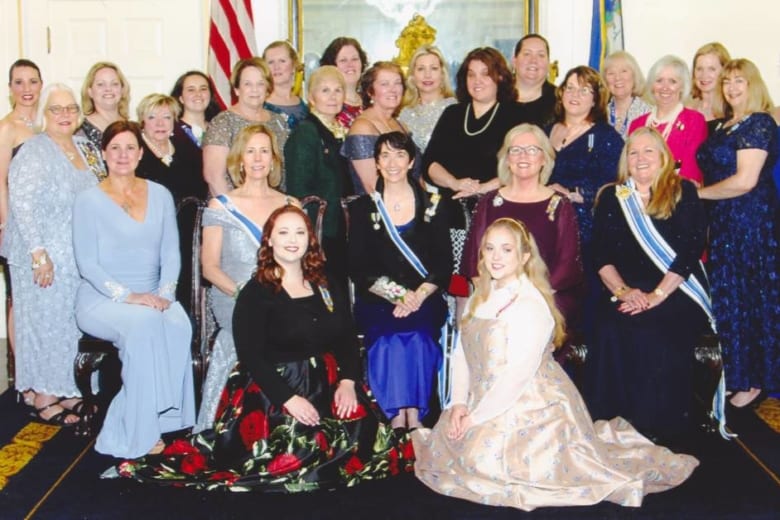This 4th of July, we shine light on a client with deep ties to our country’s birth: the Connecticut Daughters of the American Revolution (CTDAR). Before you fire up the grill, let’s explore this recent project to remember what Independence Day is all about.
Who is CTDAR?
CTDAR is a group of Connecticut women with freedom in their blood. It’s part of the National Society Daughters of the American Revolution (also known as NSDAR or simply DAR), a nonprofit founded in 1890. The Daughters launched CTDAR two years later.
Every NSDAR member can trace her lineage back to a patriot from the American Revolution! Like EverPresent, genealogy and preservation are vital parts of what they do – so we were thrilled to help digitize the photos, documents and memorabilia that tell CTDAR’s story.
What Does CTDAR Do?
Today, the Daughters’ efforts are mainly focused on:
- Education
- Supporting Veterans
- Preserving U.S. History
- Genealogy
- Community Service
You might think CTDAR, like many large organizations, must have shifted its values to keep up with the times. It hasn’t had to. The work it began in 1892 is still important today – see for yourself on the DAR YouTube Channel!
Photo, Memorabilia & Document Scanning for CTDAR
While EverPresent is the family memories company, we also love institutional projects like this one. Our experts make it easy for organizations to preserve and sort their records, and every project is tailored to their needs. CTDAR sent us about one dozen huge scrapbooks full of vintage photographs, newspaper clippings, memorabilia, and documents that date as far back as 1913.
Lots of these items – bylaws, leadership changes, and so on – are important parts of the group’s story. But what caught our eyes were some of the photos and documents that show CTDAR’s efforts in action.
CT Delegations to DAR’s Continental Congress
Every year, CTDAR sends delegates to DAR’s national convention in Washington, D.C. – the Continental Congress. It’s named after colonial leadership during the American Revolution.
The Daughters still attend these to catch up with each other, honor noteworthy members and plan for the year ahead. Here’s the Connecticut Delegation from 1914:
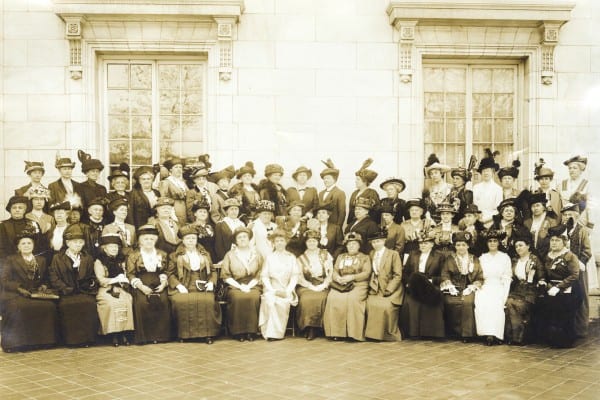
Scrapbooks aren’t confined to flat photos and documents, either; we can easily scan most of the memorabilia attached to their pages. Check out these ribbons from DAR’s 1915 convention!
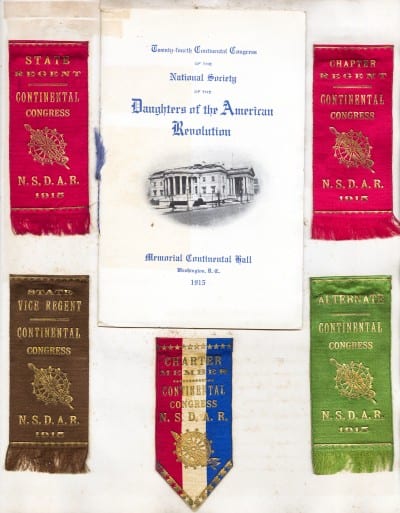
Commemorative and Historical Work
As descendants of Revolutionary troops and supporters, the Daughters have often set up memorials that pay tribute to veterans and fallen soldiers. They dedicate markers, fountains, buildings and more through touching ceremonies and generous donations.
This stone, for example, commemorates French soldiers who made the ultimate sacrifice in West Hartford:
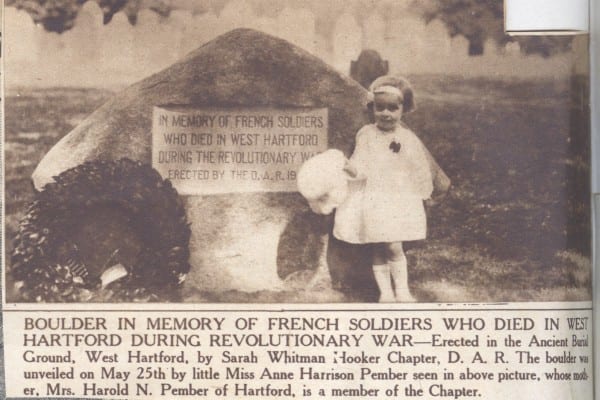
And here’s another CTDAR ceremony, this time for the planting of a sapling from a tree that George Washington supposedly stood under when he rallied the Continental Army in Massachusetts. This clipping is from the New York Times in 1933:
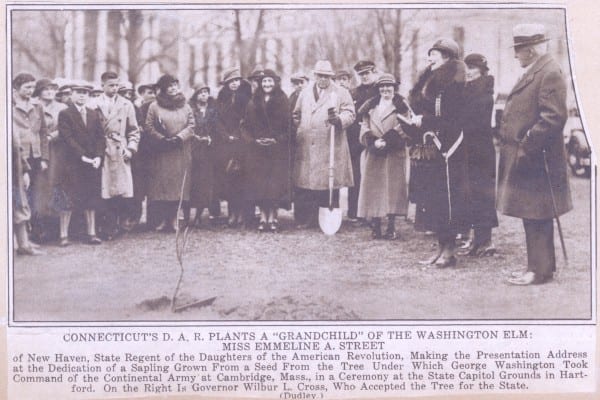
The list of memorials goes on, but the point is that CTDAR always takes care to remember its roots.
Patriotic Education, Thrift, Charity and Relief Work
The Revolutionary War isn’t the only conflict the Connecticut Daughters are tied to. Their scrapbooks also document the group’s response to World War I: safeguarding the American Dream through patriotic education, charity, and stewardship.
Thrift and Stewardship
In a show of solidarity with WWI soldiers, the Daughters promoted a spirit of conservation and self-sacrifice in the States. They helped fund U.S. war efforts by purchasing “thrift stamps” and donating to Liberty Loans, or war bonds.
They even gave up vacations during the war. From CTDAR’s scrapbooks: “To the men ‘over there’ fighting in the trenches, there will be no summer vacation … Surely we, the Daughters of the American Revolution, can take no vacation from our war relief work…”
Education
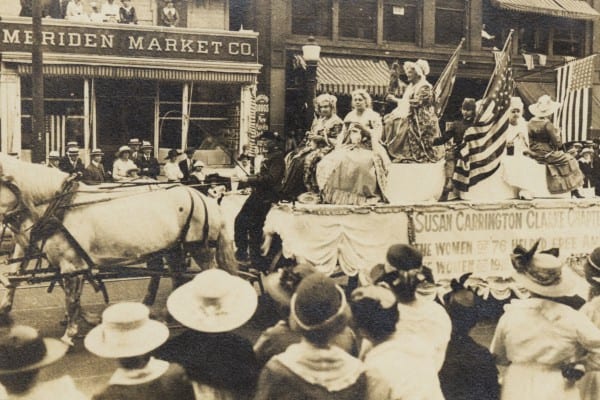
CTDAR supports what it calls “Patriotic Education.” During WWI it promoted American cultural values and rituals, including respect for the flag, celebrating national holidays, and teaching English to the wave of European immigrants that came. The Daughters gave to schools and even provided scholarships for local children.
Charity and Relief Work
A key part of CTDAR’s efforts involved volunteer work and financial donations for the U.S. and its allies. Members knit clothes and blankets, sent care packages, and raised funds; some, like the two below, even worked overseas to help nurse wounded soldiers and civilians.
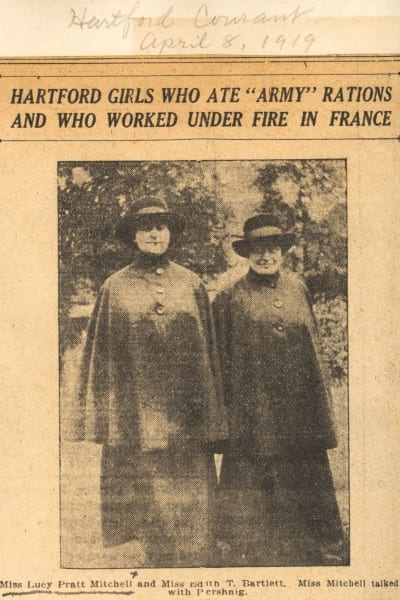
On a national level, DAR gave significant financial support to war relief efforts. A 1918 financial statement puts the group’s “Total War Expenditures” at more than $9.4M – which, according to the West Egg inflation calculator, would be closer to $160M in 2018 dollars.
Re-Chickenizing France
The Daughters’ educational, thrift, charity and relief work all intersect in a unique campaign they joined per a 1918 bulletin titled “RE-CHICKENIZE FRANCE.” The ultimate goal was to send France chickens for food to help this U.S. ally recover from the war.
DAR asked members to coax their children to donate money to the cause. The bulletin said donations would help incubate chicken eggs and place chicks on farms in France. What’s more, it noted the importance of teaching youth “To deny themselves two soda-waters,” among other comforts, to “put our own children in tune with what it means to keep Freedom alive…”
CTDAR Today
Many of the Connecticut Daughters’ records and publications have since gone digital, but the values we’ve seen in their scrapbooks are still alive today. And now that these books are digitized, too, their legacy is even more protected than it’s been for all these years.
Want to find out if you’re a Daughter of the American Revolution? Visit CTDAR’s Genealogy Research page and try searching for an ancestor – what you learn could surprise you!


